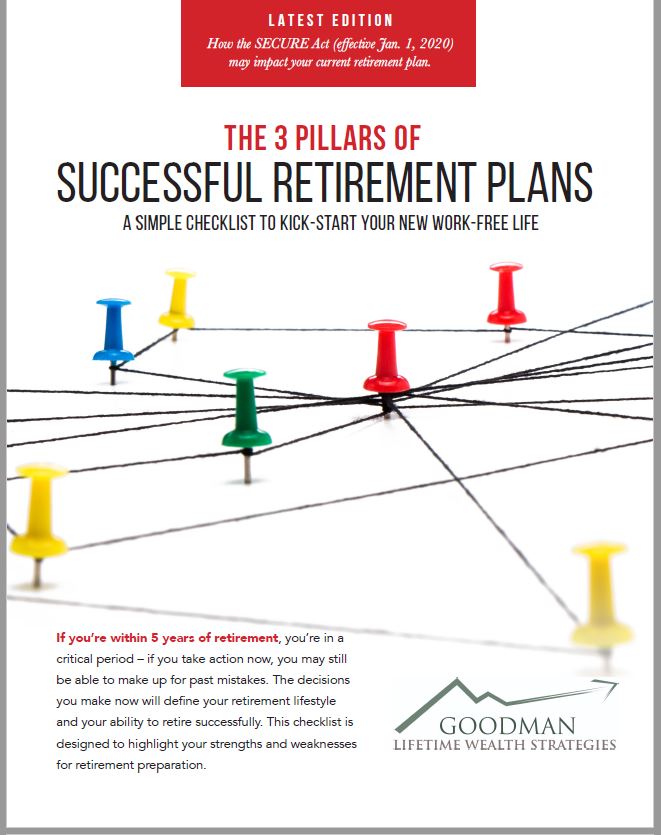In this month’s recap: Stocks fell as rising bond yields, elevated inflation, and a hawkish-sounding Fed took turns rattling investor confidence.
U.S. Markets
Rising yields, elevated inflation, and a hawkish-sounding Fed took turns rattling the stock market in January, with technology-heavy Nasdaq particularly hard hit. The Dow Jones Industrial Average dropped 3.32 percent, while the Standard & Poor’s 500 Index fell 5.26 percent. The Nasdaq lost 8.98 percent.1
Fear of the Fed
Anxiety about the Federal Reserve’s pivot from its accommodative monetary policy toward monetary normalization hung over the market all month.Early in the month, the Fed released the minutes from its December meeting, which suggested a more hawkish tone than what investors were expecting. Inside the Fed minutes, the first update that unsettled markets was the likelihood of an interest rate increase in March, which would be sooner than many had expected. The second update that upset investors was news that the Fed was considering reducing its balance sheet, a step toward tightening that had not been widely anticipated.
More from the Fed
Following its January meeting, Fed Chair Powell indicated that reducing the balance sheet might come at a faster pace than the balance sheet reductions in 2014 and 2018.
Bond yields trended higher in response to Powell’s news. Higher yields hurt technology and other high-valuation companies the most.
Sector Scorecard
Except for Energy (+17.07 percent), all industry sectors closed the month with losses, including Communications Services (-8.27 percent), Consumer Discretionary (-13.23 percent), Consumer Staples (-1.05 percent), Financials (-1.33 percent), Health Care (-7.07 percent), Industrials (-5.54 percent), Materials (-7.70 percent), Real Estate (-8.48 percent), Technology (-10.09 percent), and Utilities (-3.86 percent).3
What Investors May Be Talking About in February
With the fourth quarter earnings season well underway, investors will continue to focus on earnings reports throughout the month. Expect investors to continue to focus on quarterly reports from high-valuation growth companies.Earnings from such companies may have a high bar to clear with investors amid expectations for a continued climb in bond yields.As investors saw in January, these high-multiple stocks can come under pressure as bond yields trend higher. The reason for this is twofold. First, when rates tick up, it’s more difficult to forecast future earnings. Second, higher rates may increase a firm’s cost of capital.
World Markets and Indicators
Overseas markets fell in tandem with the U.S., as the MSCI-EAFE Index sank 5.76 percent in January.4
Major European markets were broadly lower, with losses in Germany (-2.60 percent) and France (-2.15 percent). The U.K. was the only major European exchange that saw a gain (+1.08 percent).5
Pacific Rim markets were mostly down as well. Australia lost 6.35 percent and Japan dropped 6.22 percent. Hong Kong bucked the trend, gaining 1.73 percent.6
Gross Domestic Product: The rate of economic expansion in the fourth quarter exceeded economists’ expectations, rising 6.9 percent—triple the growth rate of the third quarter. While the headline number was strong, two concerns emerged: Much of the growth was due to inventory build-up, and the price index for personal consumption expenditures (an inflation measure) accelerated from the third quarter, climbing 6.5 percent.7
Employment: Hiring slowed in December, with employers adding just 199,000 jobs—well below consensus estimates. The unemployment rate dropped to 3.9 percent, while wage growth rose 4.7 percent from a year ago, signaling a tight labor market. The December jobs report reflects data prior to the start of the Omicron variant spread in late December.8
Retail Sales: Retail sales declined by 1.9 percent. The spread of Omicron and early consumer holiday buying in response to possible inventory shortages dampened spending in December.9
Industrial Production: Industrial production contracted 0.1 percent. This dip was attributed to a decline in auto production and a drop in utility output due to warmer weather.10
Housing: Housing starts rose by 1.9 percent in the final month of 2021, helped by the warmest December on record. This increase occurred despite rising lumber prices and higher mortgage rates.11
Existing home sales slipped 4.6 percent, hampered by a higher year-over-year median sales price (+15.8 percent) and tight inventory.12
New home sales surged by 11.9 percent. With new homes, higher mortgage rates did not discourage buyers.13
Consumer Price Index: Consumer prices rose 0.5 percent in December, with inflation climbing 7.0 percent from a year ago. This year-over-year increase was the highest since 1982.14
Durable Goods Orders: Durable goods orders declined 0.9 percent to their lowest level since April 2020, reflecting the impact of the Omicron surge.15
The Fed
The Federal Open Market Committee (FOMC) at its January meeting left rates unchanged, though officials signaled that rates would likely be raised at its next meeting in March.
The Fed also approved one last round of bond purchases, bringing quantitative easing to an end by March.
The FOMC did not offer details on its plan to shrink the Fed’s balance sheet. But Fed Chair Powell indicated that shrinking the Fed’s asset holdings may occur at a faster rate than in past periods of balance sheet reductions.16
| MARKET INDEX | Y-T-D CHANGE | January 2022 |
| DJIA | -3.32% | -3.32% |
| NASDAQ | -8.98% | -8.98% |
| S&P 500 | -5.26% | -5.26% |
| BOND YIELD | Y-T-D | January 2022 |
| 10-YR TREASURY | 0..27% | 1.78% |
Source: Yahoo Finance, January 31, 2022
The market indexes discussed are unmanaged and generally considered representative of their respective markets. Individuals cannot directly invest in unmanaged indexes. Past performance does not guarantee future results. U.S. Treasury Notes are guaranteed by the federal government as to the timely payment of principal and interest. However, if you sell a Treasury Note prior to maturity, it may be worth more or less than the original price paid.
Disclaimer Link: https://lgwealths.wpengine.com/complete-marketing-pro-disclosure-2/
CITATIONS:
1. WSJ.com, January 31, 2022
2. Insight.FactSet.com, January 28, 2022
3. SectorSpdr.com, January 31, 2022
4. MSCI.com, January 31, 2022
5. MSCI.com, January 31, 2022
6. MSCI.com, January 31, 2022
7. WSJ.com, January 27, 2022
8. WSJ.com, January 7, 2022
9. WSJ.com, January 14, 2022
10. MarketWatch.com, January 14, 2022
11. CNBC.com, January 19, 2022
12. CNBC.com, January 20, 2022
13. USNews.com, January 26, 2022
14. WSJ.com, January 12, 2022
15. CNBC.com, January 27, 2022
16. WSJ.com, January 26, 2022



Leave a Reply